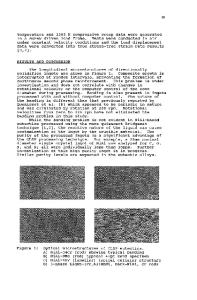Microstructure and mechanical behavior of Cr-Cr 2 Hf in situ intermetallic composites
- PDF / 3,567,830 Bytes
- 9 Pages / 598 x 778 pts Page_size
- 45 Downloads / 315 Views
I,
INTRODUCTION
INTERMETALLIC materials based on refractory metals, such as MoSi2, NbsSi3, and Cr3Si, are of significant research interest in attempts to develop materials for gas turbine applications. A major problem has been poor roomtemperature ductility and fracture toughness of intermetallic materials. An approach involving the incorporation of ductile phases, such as Nb, Cr, and Ta, to improve the damage tolerance of intermetallics is being pursued.[l-*] In addition to the requirements for high temperature use, such as strength, creep resistance, room-temperature ductility, fracture toughness, and oxidation resistance, thermodynamic stability of phases at high temperatures is necessary. A major concern in intermetallic composite systems having phases not in thermodynamic equilibrium, such as intentionally added ductile phases, is the possibility of interface reactions at high temperatures leading to degradation of mechanical properties. Two-phase systems, containing an intermetallic and a refractory phase by virtue of their thermochemical equilibrium and stability of phases, show potential for high-temperature applications.t5] There has been recent interest in Cr-containing systems such as Cr2Hf + Cr, [6,7] Cr2Ta +
K.S. RAVICHANDRAN, formerly Research Scientist, Materials and Processes, UES, Inc., is Assistant Professor, Department of Metallurgical Engineering, The University of Utah, Salt Lake City, UT 84112. D.B. MIRACLE, Group Leader, is with Metal Matrix Composites, Air Force Materials Directorate, Wright Patterson Air Force Base, OH 45433. M.G. MENDIRATTA, Director, is with Materials and Processes, UES, Inc., Dayton, OH 45432. Manuscript submitted April 26, 1995. METALLURGICAL AND MATERIALS TRANSACTIONS A
Cr, t61 Cr2Nb + Cr,tS] and Cr3Si + Cr.tSJ There are several attractive features favoring the consideration of Cr alloys for high-temperature applications. The rate of oxidation of Cr is low relative to other refractory metalsm] over the temperature range of 700 ~ to 1100 ~ The density of Cr is about 20 pct lower than that of Ni. The room-temperature elastic modulus of Cr is about 290 GPa, tl~ whereas that of Ni is about 200 GPa. The melting point of Cr is about 400 ~ higher than that of Ni. Chromium is also a widely used alloying element in most structural alloys requiring oxidation and corrosion resistance. However, as indicated by extensive research on Cr-base alloys in the 1960s and 1970s,[9,]o] low-temperature brittleness and nitridation of Cr at high temperatures in air are barriers to their application. Nevertheless, these studies show that room-temperature ductility in Cr can be achieved by controlling levels of interstitial elements and/or adding selected rare earth elements. In the present study, mechanical behavior of in situ intermetallic composites based on the Cr-Cr2Hf system[l~] were evaluated. The phase diagram of the Cr-Hf system is shown in Figure 1. Two alloys, having compositions of Cr5.6Hf (hypoeutectic) and Cr-13Hf (eutectic), with fine and coarse microstructures obtained by hea
Data Loading...











